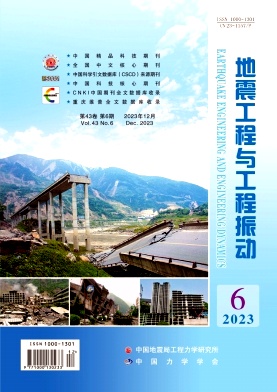NONLINEAR STATIC ANALYSIS OF MASONRY BUILDINGS THROUGH FIBRE-BASED CAPACITY MODELLING
引用次数: 0
Abstract
Seismic performance assessment of masonry buildings requires a nonlinear response analysis to achieve a reliable understanding of the possible effects of future earthquakes in terms of damage and losses. Equivalent frame (EF) modelling combined with nonlinear static procedures has been recognized as an efficient tool, which was validated in several studies through both experimental data and post-earthquake damage inspections. In this paper, a new macroelement based on a fibre formulation is implemented into a matrix analysis approach to build up a nonlinear EF model and to perform incremental static (push-over) analysis with response control. For each step of the analysis, the stiffness matrix of the structure is updated using the novel macroelement model, accounting for geometric and mechanical nonlinearities both in terms of flexural and shear behaviour. Floor systems are modelled with truss elements, the stiffness of which can be varied in order to consider either rigid or flexible floors. In addition, the capacity model can simulate different degrees of connection at wall intersections and can easily be adapted to consider structural elements made of reinforced concrete, steel, wood, or other materials. The capacity modelling procedure proposed in this study was first validated by simulating the in-plane lateral behaviour of a full-scale masonry wall with opening, and then, implemented to run pushover analysis of existing masonry buildings representative of those located in the Cam-pania region (southern Italy).基于纤维容量模型的砖石结构非线性静力分析
砌体建筑的抗震性能评估需要非线性响应分析,以可靠地了解未来地震在破坏和损失方面可能产生的影响。等效框架(EF)模型与非线性静力过程相结合已被认为是一种有效的工具,并通过实验数据和震后损伤检测得到了验证。本文将基于纤维公式的一种新的宏元应用于矩阵分析方法,建立非线性EF模型,并进行响应控制的增量静态(推覆)分析。对于分析的每一步,使用新的宏单元模型更新结构的刚度矩阵,考虑到弯曲和剪切行为方面的几何和机械非线性。楼板系统用桁架单元建模,其刚度可以变化,以便考虑刚性或柔性楼板。此外,容量模型可以模拟墙体交叉口不同程度的连接,并且可以很容易地适应考虑钢筋混凝土、钢材、木材或其他材料制成的结构单元。本研究中提出的能力建模程序首先通过模拟带开口的全尺寸砌体墙的平面内横向行为进行验证,然后对位于坎帕尼亚地区(意大利南部)的具有代表性的现有砌体建筑进行推覆分析。
本文章由计算机程序翻译,如有差异,请以英文原文为准。
求助全文
约1分钟内获得全文
求助全文

 求助内容:
求助内容: 应助结果提醒方式:
应助结果提醒方式:


